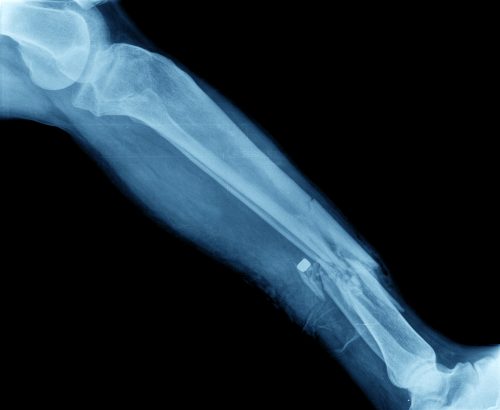
Several recent studies have evaluated fractures in patients with diabetes. One study determined what types of fractures patients with diabetes mellitus are most likely to sustain, and another assessed whether canagliflozin increases fracture risk in type 2 diabetes patients compared to a glucagon-like peptide-1 (GLP-1) agonist.
For the first study, published in BMJ Open, researchers queried the PubMed, EMBASE and Cochrane Library databases for relevant studies from inception through March 2018. Eligible studies were prospective and retrospective cohort studies that analyzed the association between diabetes mellitus and risk of fracture at different sites.
Diabetes mellitus patients had greater odds of sustaining total (relative risk [RR]: 1.32; 95% CI 1.17 to 1.48; p<0.001), hip (RR: 1.77; 95% CI 1.56 to 2.02; p<0.001), upper arm (RR: 1.47; 95% CI 1.02 to 2.10; p=0.037), and ankle fractures (RR: 1.24; 95% CI 1.10 to 1.40; p<0.001). Presence of diabetes mellitus did not increase the odds of distal forearm (RR: 1.02; 95% CI 0.88 to 1.19; p=0.809) and vertebral fractures (RR: 1.56; 95% CI 0.78 to 3.12; p=0.209).
In analyses by type 1 diabetes mellitus versus type 2 diabetes mellitus, type 1 patients were more likely to sustain total (RR: 1.24; 95% CI 1.08 to 1.41; p=0.002), hip (RR: 3.43; 95% CI 2.27 to 5.17; p<0.001), and ankle fractures (RR: 1.71; 95% CI 1.06 to 2.78; p=0.029).
In sum, according to the researchers, “Patients with [diabetes mellitus] had greater risks of total, hip, upper arm and ankle fractures, with [type 1 diabetes mellitus] having a more harmful effect than [type 2 diabetes mellitus].”
In the second study, published in Annals of Internal Medicine, researchers searched two U.S. commercial health care databases for data spanning from March 2013 to October 2015. A total of 79,964 patients initiating canagliflozin were matched 1:1 to 79,964 patients starting treatment with a GLP-1 agonist. Humerus, forearm, pelvis, or hip fracture that required medical attention was the primary outcome; secondary outcomes were all other fractures.
Patients in both groups had similar primary outcome rates (canagliflozin: 2.2 events per 1,000 person-years; GLP-1 agonists: 2.3 events per 1,000 person-years; overall hazard ratio [HR], 0.98 [95% CI, 0.75–1.26]). Risk of pelvic, hip, humerus, radius, ulna, carpal, metacarpal, metatarsal, or ankle fracture also did not significantly differ between canagliflozin (14.5 events per 1,000 person-years) and GLP-1 agonist patients (16.1 events per 1,000 person-years) (overall HR, 0.92 [CI, 0.83–1.02]).
The researchers wrote, “In this study of middle-aged patients with type 2 diabetes and relatively low fracture risk, canagliflozin was not associated with increased risk for fracture compared with GLP-1 agonists.”
Osteoporosis-related Fractures Pose Significant Financial Burden on Medicare Beneficiaries
American Diabetes Association Releases New Disease Guidelines, Focus on Patient-centered Care
Sources: BMJ Open, Annals of Internal Medicine







 © 2025 Mashup Media, LLC, a Formedics Property. All Rights Reserved.
© 2025 Mashup Media, LLC, a Formedics Property. All Rights Reserved.